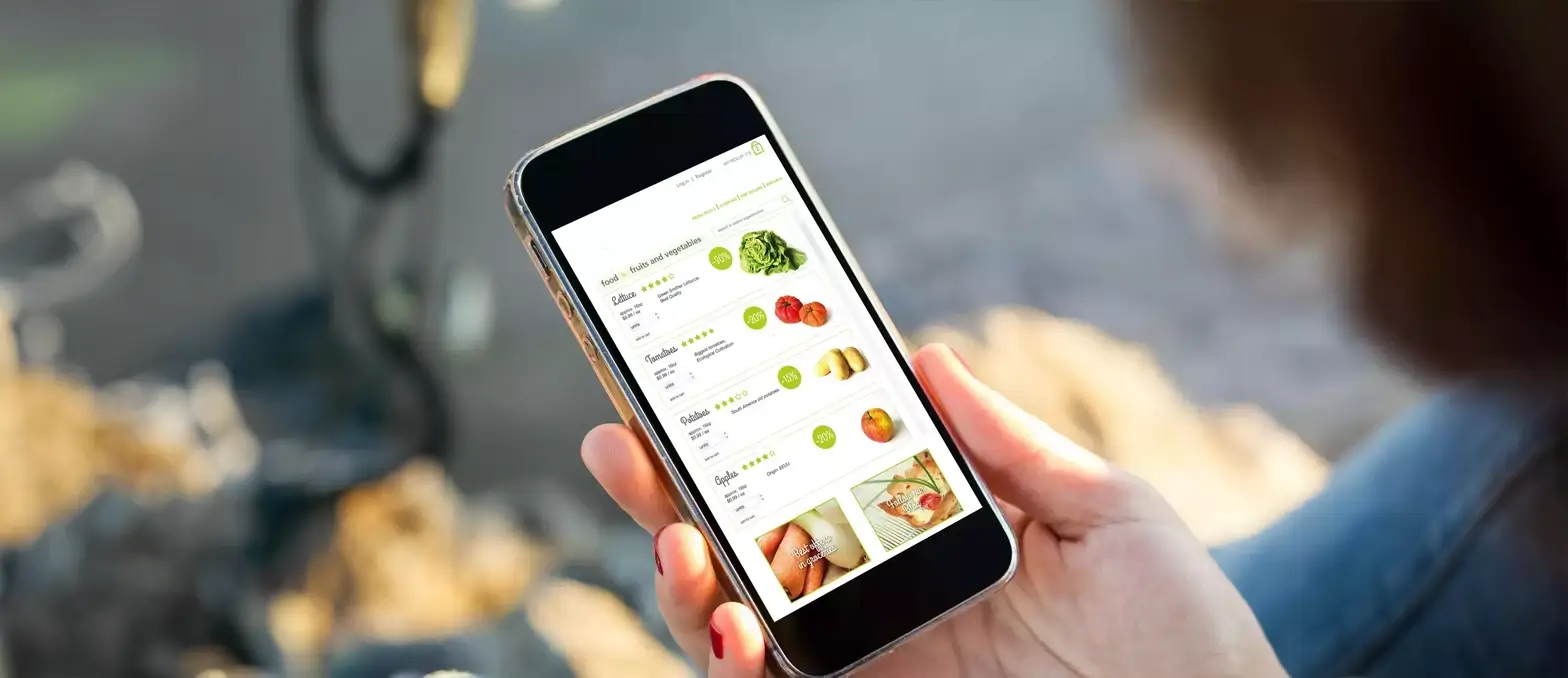Table of Contents
The Internet of Things has transformed the way we interact with devices and systems. It has enabled enhanced automation, data gathering, and decision-making across industries. In the center of many IoT applications is IoT Remote Control. Giving them the ability to operate, monitor, and adjust IoT devices remotely. This ensures convenience, efficiency, and improved management of resources. These devices can manage smart home systems from a smartphone or oversee industrial equipment from a remote control center. IoT remote control has become essential to harnessing the full potential of IoT. In this article, we’ll explore what is remote control in IoT? What are its benefits, best practices for implementing it securely and effectively. We will look at the real-world applications, and the challenges organizations should consider to maximize their IoT investment.
What is IoT Remote Control?
So, what is remote control in IoT? IoT remote control refers to the capability of controlling internet-connected systems or equipment from a distance. In order to achieve remote accessibility, sensors and actuators must be integrated into physical devices, connected to a network infrastructure, and made accessible via a software interface. The technology enables users to collect and analyze pertinent data, monitor the operational state of IoT devices, and exert control over device functions.
By using IoT remote control, businesses and people can get beyond geographic restrictions, maximize gadget performance, and gain insightful information. This technology is used in many different fields, including asset tracking, smart homes, industrial automation, and environmental monitoring. Cloud RMM platforms for data management and processing, embedded sensors and actuators for data acquisition and device manipulation, a user-friendly interface for smooth interaction and control, and strong network connectivity to guarantee dependable communication are all essential elements supporting IoT remote control.
Here is why IoT remote control is important-
- The remote monitoring and control market is expected to grow from $24.6 billion in 2022 to $32.3 billion by 2027.
- IoT-based remote control systems for smart buildings can reduce energy consumption by up to 30% through optimized lighting, HVAC, and appliance control.
- The number of connected devices for remote diagnostics, monitoring, and process control is expected to reach 96.7 thousand by 2026.

Key Benefits of IoT Remote Control
To manage and maintain IoT devices, remote access is essential. There are a number of advantages to having remote access to these diverse networks of devices from any location, which improves the overall security and functionality of IoT systems. IoT remote control has the following benefits:
Reduced Downtime
Businesses can monitor their systems and equipment in almost real time with IoT remote monitoring, and they can collect useful data and insights to help minimize downtime. For instance, preventative services are scheduled to occur every x days, weeks, or months, but this schedule is based on the assumption that use will be distributed normally. Because they are receiving predictive maintenance (PM) later than the average, end users who use the device more frequently than the average are more likely to have wear-based failures.
By providing information on wear rates, usage rates, and fault codes, IoT remote monitoring and control helps the company transition from a time-based to condition-based approach, which guarantees that PM work is completed when it’s needed and minimizes downtime.
Monitoring in Real Time and Quick Reaction
Continuous, real-time, IoT remote monitoring and control is made possible by remote access, which enables businesses to identify problems right away. Whether it’s a broken industrial machine or an anomaly reported by a smart city sensor, quick problem detection reduces downtime and guarantees that problems can be resolved quickly. By anticipating possible problems before they arise, maximizing resource utilization, and averting expensive interruptions, predictive maintenance further improves this capability.
Gathering and Analyzing Data to Improve Decision-Making
From environmental readings to performance measures, IoT remote control produces enormous volumes of useful data. Businesses can make data-driven decisions by using remote access to make it easier to retrieve and analyze this data. By providing real-time insights about service delivery and usage trends, this improves device performance, operational efficiency, and even customer experiences.
Lower Operating Expenses
By removing the requirement for on-site visits for device maintenance or troubleshooting, the IoT remote control platform significantly lowers operating costs. Companies maintain their devices more quickly and effectively while saving money on staff, travel, and even production downtime. This can save a lot of money in sectors like agriculture and energy, for instance, when assets are spread out globally.
Improved Protection for Networked Devices
Security issues are growing along with the number of IoT devices connected. These devices are shielded against cyberattacks by remote access solutions that use best practices like Secure Shell or SSH protocols and multi-factor authentication.
This guarantees that even when viewed remotely controlled IoT, data and network infrastructure are secure. Maintaining the integrity of IoT devices and safeguarding sensitive data depend heavily on properly secured remote access.
Controlling Access from Third Parties
One of the most important aspects of managing IoT remote control is reducing security threats, which requires manufacturers to control remote access by both employees and third parties. You can stop unwanted access and protect sensitive data on your system by putting access control and monitoring in place.
Allocation of Resources
Many businesses depend on outside parties to upgrade or manage their Internet of Things systems. To lower hazards, it is essential to securely manage this access. Businesses can ensure that workers or outside vendors only access the devices and data they are permitted to handle by implementing role-based access control (RBAC), which allows them to grant distinct permissions to various individuals. Additional security and accountability are provided by ongoing observation and recording of these exchanges.
Best Practices for Implementing IoT Remote Control
Because there are more and more connected devices, each of which could be a point of entry for cybercriminals, it is imperative to remotely control IoT access. The following best practices and crucial protocols will guarantee safe IoT remote access:
1. End-to-End Encryption
Protecting the data transferred between distant users and Internet of Things devices requires end-to-end encryption. Businesses can make sure that private information sent over the network cannot be accessed by unauthorized parties by implementing robust encryption methods like TLS (Transport Layer Security). This is particularly crucial when handling devices in sectors where data privacy is crucial, like healthcare or banking.
2. Role-Based Access Control (RBAC)
The secret to lowering hazards is controlling who has safe access to IoT devices. By putting Role-Based Access Control (RBAC) into practice, businesses can restrict access according to particular job functions. A technician could merely need access to undertake system maintenance, for example, whereas a supervisor might need more extensive IoT remote control. This method lessens the possibility of inadvertent or intentional exploitation by ensuring that users only have the rights required to complete their tasks.
3. MFA or multi-factor authentication
By forcing users to confirm their identity using various methods—such as a hardware token or a password linked with a mobile app—before gaining access to IoT devices, multi-factor authentication (MFA) offers an additional layer of protection. This greatly lowers the possibility of unwanted access, particularly in settings where staff members or outside parties must log in from a distance. Pairing MFA with a team password manager can further enhance security by allowing teams to securely store and share strong, unique passwords without the risk of weak or reused credentials.
4. Secure Access with SSH Protocol
The Secure Shell (SSH) protocol is among the safest ways to gain remote access to IoT devices. SSH protects critical commands and data by enabling encrypted connection between users and distant equipment. This is especially helpful for remote updates and diagnostics, where industrial IoT system security requires encrypted command-line access.
5. Logging and Audit Trails
Maintaining security requires keeping thorough logs of every remote access session. Audit trails can be used to determine which users accessed which devices, what they did, and when. These logs include crucial forensic information that can assist in identifying vulnerabilities in the event of a security breach or performance problem. All interactions with IoT devices are recorded thanks to a strong logging system, which offers transparency and accountability.
6. Configuring Secure Devices
Reducing vulnerabilities requires that IoT devices be configured securely from the beginning. To guard against known exploits, devices should be updated often with the most recent firmware and fixes. To reduce the attack surface, unused services or ports should be stopped and default passwords should be changed to strong, one-of-a-kind ones.
7. Integration of Virtual Private Networks (VPNs)
Integrating VPNs into IoT remote monitoring can assist in protecting the connection between users and distant devices for increased comfort and security. By offering a safe, encrypted tunnel for data transmission, a VPN keeps private information from being intercepted by unauthorized users. This works especially well in settings when several IoT devices are spread out over different places.

Real-World Use Cases
IoT remote control is changing the way businesses function. Let’s take a look at the various use cases of the role of IoT remote control.
HealthCare
The integration of medical technologies and devices with the internet and other digital platforms is known as the Internet of Medical Things (IoMT or Healthcare IoMT). Among the first industries to use IoT technologies to enhance their service operations were medical equipment manufacturers. In most cases, it is not feasible to have a technician in every hospital, as there are thousands of hospitals in the United States alone. A shortage of technicians can cause some damage.. Since IoT adoption allowed remote technicians to access devices at any place in a matter of seconds, it was an important transformation.
COVID proved to be a chance for the more experienced IoMT users to help the community and their clients. Almost all site visits were stopped at the start of COVID. As a result, a large number of service evaluations were conducted remotely, frequently guiding on-site medical technicians through restart, repair, calibration, and other procedures. Additionally, several companies discovered that they might help the CDC and other organizations detect hot spots and trends by anonymizing, aggregating, and reporting data on COVID testing numbers (tests taken and outcomes).
Industrial
Large production machinery manufacturers frequently discover that their goods are placed in crucial applications at very distant locations. A return trip must be avoided at all costs because service dispatches to these locations frequently entail a day or more of travel. In these situations, IoT remote monitoring and control and access to operating data are essential for a successful first-time fix and an accurate diagnosis since blind dispatch—sending a technician with little to no triage information—is exceedingly dangerous. These manufacturers can also use usage-based data to send out local warnings for condition-based or periodic maintenance.
Even more recent technology can record whether and when this maintenance is carried out. This allows the OEM to assess and negotiate warranty claims in the event that the maintenance cycles were disregarded, and it also provides them with very clear insight into how their maintenance procedure affects their warranty claims.
Fleet management
Because it enables almost real-time tracking of vehicles and assets, IoT remote monitoring has emerged as a crucial tool for fleet management. GPS tracking and sensors offer useful information about position, vehicle performance, fuel consumption, driving behavior, and maintenance requirements. Fleet managers may utilize this information to make well-informed decisions that will optimize their operations, cut expenses, and—above all—improve safety and emergency response times.
Challenges and Considerations
1. Security Risks
To remotely control IoT has potential security vulnerabilities, such as unauthorized access and data breaches. It’s essential to implement strong security protocols, such as data encryption, multi-factor authentication, and regular vulnerability assessments.
2. Dependence on Network Connectivity
IoT remote control relies on stable network connectivity, making systems susceptible to disruptions due to network outages. Implementing network redundancy and backup protocols is critical to ensure continuous access to remote-controlled devices.
3. Compatibility and Interoperability
IoT ecosystems consisting of different IoT device manufacturers can face interoperability problems. In this regard, interoperability assurance becomes more of assurance. That ensures that the devices could support common standards and protocols. Enabling the devices to work in harmony with one another on a given network.
4. Data Privacy and Compliance
IoT devices often collect large amounts of data, which may include sensitive information. Organizations must comply with data privacy regulations, such as GDPR. They should implement measures to protect user data. Transparency about data collection and usage is essential to build trust with users.
5. Cost of Implementation and Maintenance
While IoT remote control can drive efficiency, the initial cost can be high. This is because setting up IoT infrastructure, purchasing devices, and maintaining connectivity may be substantial. Organizations should conduct a cost-benefit analysis to ensure that the benefits outweigh the expenses.
Conclusion
IoT remote control is extremely valuable across the board in all industries. This is due to the fact that it is a mechanism to remotely control IoT. Improving efficiency, and informing decision-making based on actual data. From smart home automation, health-monitoring operations, to industrial processes, the potential of IoT remote control is unending. But for maximizing its benefits, there should be best practice standards, including strict security measures, user-friendly interfaces, and regular device updates. Connecting with the best IoT app development company will ensure that all best practices are followed.
Therefore, by dealing with the security, network reliability, and compatibility issues of IoT remote control, organizations can maximize the benefits and ensure high levels of security for sensitive information while assuring safe continuous operations. In this sense, IoT healthcare solutions will increasingly play a more strategic role in the future of automation, connectivity, and data-driven decision making as we move toward the increasingly connected world.
FAQs
What is IoT remote control?
IoT remote control is the ability to monitor, manage, and operate IoT-enabled devices from a distance. This is done by using connected devices like smartphones, tablets, or computers. This technology enables users to interact with their IoT devices in real time, regardless of their physical location.
How does IoT remote control work?
IoT remote control works by connecting IoT devices to a network and managing them through a cloud-based or local platform. Users access the platform from a mobile or web application, allowing them to monitor, configure, and operate devices in real-time through internet connectivity.
What industries benefit from IoT remote control?
IoT remote control is widely useful in various industries, including:
- Smart homes: Managing lighting, security, and climate control.
- Healthcare: Remote patient monitoring and diagnostics.
- Manufacturing: Monitoring and controlling machinery.
- Logistics: Tracking and optimizing fleet and asset management.
- Retail: Inventory and energy management in stores.
How does IoT remote control improve data insights?
IoT remote control allows for continuous data collection from connected devices. This data can be analyzed to understand usage patterns, identify inefficiencies, optimize processes, and make informed decisions based on real-time insights.
What’s the difference between IoT remote control and traditional remote control?
IoT remote control is on a different level from the conventional remote control. Unlike the traditional remote controls, IoT remote controls work through internet connectivity with devices controlled remotely from a mobile as well as web interface. It is all about data analytics and cloud-based management and sometimes device-to-device communication, mainly.
How does IoT remote control contribute to predictive maintenance?
With IoT remote control, devices continue to collect and transmit performance data to a central platform. From there, the analysis of that data can help recognize patterns and predict potential failures, thereby reducing the time needed for maintenance before it breaks down, cutting downtime and repair costs.
Are there standards or compliance regulations for IoT remote control?
Yes, IoT remote control systems generally adhere to industrial standards toward data privacy and security. It includes:
- GDPR for data protection
- ISO/IEC 27001 for information security
- HIPAA in healthcare toward patient data security.
Compliances ensure that IoT systems meet regulatory and safety requirements.






